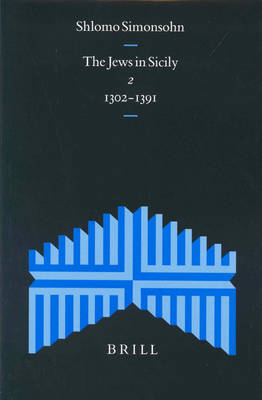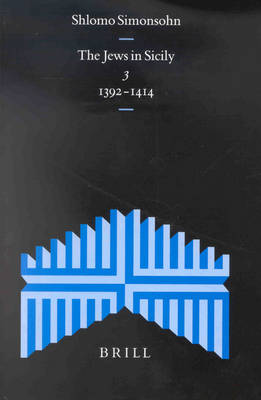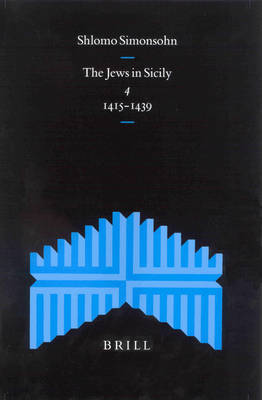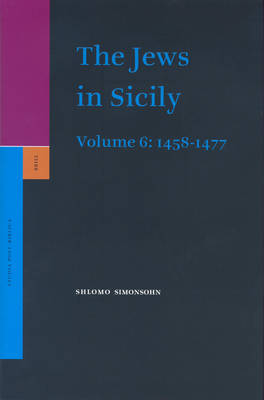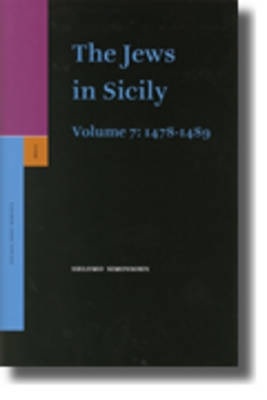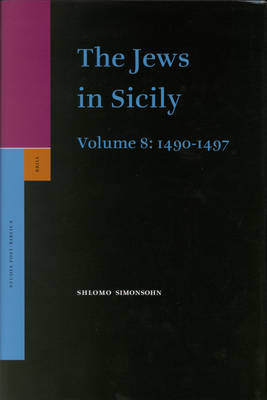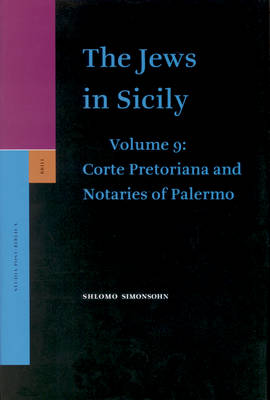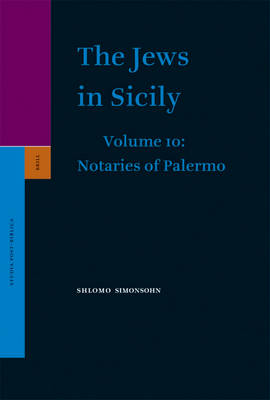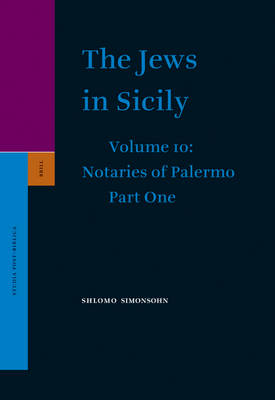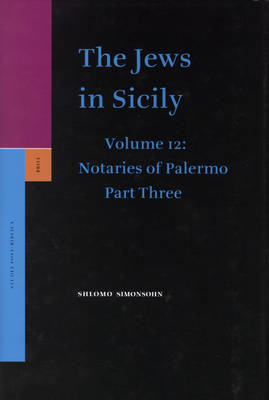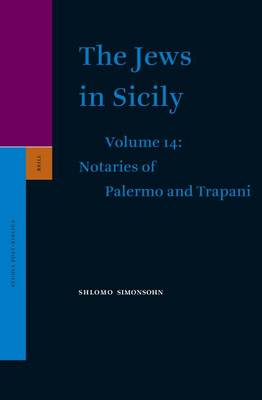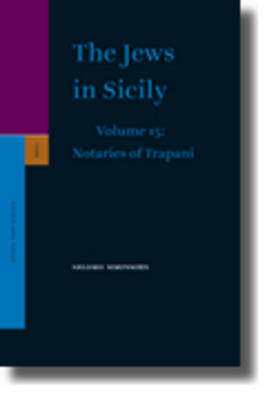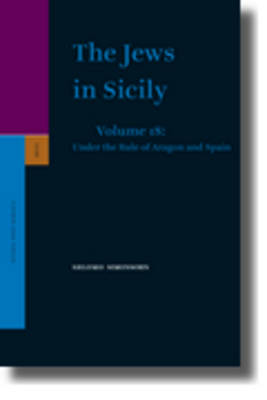Studia Post Biblica / The Jews in Sicily
16 primary works • 17 total works
Book 1
The abundance of historical records in the archives of the Crown and of local
authorities compares favourably with the relative scarcity of surviving documentation in earlier centuries. Therefore, again, many documents had to be reported in summary form. Much new information has come to light. The volume is again provided with additional bibliography and indexes, while the introduction has been relegated to the end of the series on the Jews of the island.
Book 2
The abundance of historical records in the archives of the Crown, local authorities and notaries compares favourably with the relative scarcity of surviving documentation in preceding centuries. Therefore, many documents had to be reported in summary form. Much new information has come to light, and many facets of Jewish life in Sicily, hitherto unknown or obscure, have been uncovered and illustrated. The volume is again provided with a bibliography and indexes, while the introduction has been relegated to the end of the series on the Jews of the island.
Book 3
Book 4
The abundance of historical records in the archives of the Crown and of local authorities compares favourably with the relative scarcity of surviving documentation in earlier centuries. Therefore, again, many documents had to be reported in summary form. The volume is again provided with additional bibliography and indexes, while the introduction has been relegated to the end of the series on the Jews of the island.
Book 5
Book 6
The abundance of historical records in the archives of the Crown and of local authorities compares favourably with the relative scarcity of surviving documentation in earlier centuries. Therefore, again, many documents had to be reported in summary form. The volume is provided with additional bibliography and indexes, while the introduction has been relegated to the end of the series on the Jews of the island.
Book 7
The abundance of historical records in the archives of the Crown and of local authorities again compares favourably with the relative scarcity of surviving documentation in earlier centuries. Therefore, many documents had to be reported in summary form. The volume is provided with additional bibliography and indexes, while the introduction will appear at the end of the series on the history of the Jews of the island.
Book 8
The abundance of historical records in the archives of the Crown and of local authorities again compares favorably with the relative scarcity of surviving documentation in earlier centuries. Therefore, many documents had to be reported in summary form. The volume is provided with additional bibliography and indexes, while the introduction will appear at the end of the series.
This is the last volume of the The Jews in Sicily based mainly on governmental sources, to be followed by additional volumes containing records culled from notarial deeds.
Book 9
The Jews in Sicily, Volume 9 Corte Pretoriana and Notaries of Palermo
by Shlomo Simonsohn
Although the surviving legal deeds present only a fraction of the total drawn up in those years, they are copious and abundant. Over 30,000 documents of this group were selected for publication. While some documents were dealt with at length, most had to be presented in summary form, giving only the bare essentials. Most appear here for the first time. The volume is provided with additional bibliography and indexes, while the introduction will appear at the end of the series.
Book 10
Although the surviving legal deeds present only a fraction of the total drawn up in those years, they are copious and abundant. Over 30,000 documents of this group were selected for publication. While some documents were dealt with at length, most had to be presented in summary form, giving only the bare essentials. Most appear here for the first time. The volume is provided with additional bibliography and indexes, while the introduction will appear at the end of the series.
Book 11
Although the surviving legal deeds present only a fraction of the total drawn up in those years, they are copious and abundant. Over 30,000 documents of this group were selected for publication. While some documents were dealt with at length, most had to be presented in summary form, giving only the bare essentials. Most appear here for the first time. The volume is provided with additional bibliography and indexes, while the introduction will appear at the end of the series.
Book 12
Although the surviving legal deeds present only a fraction of the total drawn up in those years, they are copious and abundant. Over 30,000 documents of this group were selected for publication. While some documents were dealt with at length, most had to be presented in summary form, giving only the bare essentials. Most appear here for the first time. The volume is provided with additional bibliography and indexes, while the introduction will appear at the end of the series.
Book 14
The Jews in Sicily, Volume 14 Notaries of Palermo and Notaries of Trapani
by Shlomo Simonsohn
Much information is provided on trade and commerce, crafts and professions, religious and family life. Some light is thrown also on the internal life of the communities, particularly the larger ones, including organization and institutions, the synagogue, education, customs, and traditions.
Although the surviving legal deeds present only a fraction of the total drawn up in those years, they are copious and abundant. Over 30,000 documents of this group were selected for publication, most appearing here for the first time. While some documents are discussed at length, the majority are only presented in summary form. The volume is provided with additional bibliography and indexes, while the introduction will appear at the end of the series.
Book 15
Much information is provided on trade and commerce, crafts and professions, religious and family life. Some light is thrown also on the internal life of the communities, particularly the larger ones, including organization and institutions, the synagogue, education, customs and traditions.
Although the surviving legal deeds present only a fraction of the total drawn up in those years, they are copious and abundant. Over 30,000 documents of this group were selected for publication, most appearing here for the first time. While some documents are discussed at length, the majority are only presented in summary form. The volume is provided with additional bibliography and indexes, while the introduction will appear at the end of the series.
"Simonshon’s last volume confirms once again the importance of his documentary series for students of Italian, Sicilian and Jewish matters, from late antiquity to early modern times. The coherence of both modes of collection and organization of materials, together with copious amount of data and suggestions for further study, continue to spoil scholars and researches who, in years, have come to immensely appreciate the convenience and richness of this comprehensive collection."
Lucia Finotto, Brandeis University
Book 16
Book 17
Much information is provided on trade and commerce, crafts and professions, religious and family life. Some light is thrown also on the internal life of the communities, particularly the larger ones, including organization and institutions, the synagogue, education, customs and traditions.
Although the surviving legal deeds present only a fraction of the total drawn up in those years, they are copious and abundant. Over 30,000 documents of this group were selected for publication, most appearing here for the first time. While some documents are discussed at length, the majority are only presented in summary form. The volume is provided with additional bibliography and indexes, while the introduction will appear at the end of the series.

